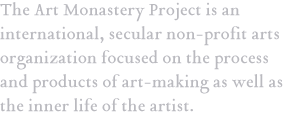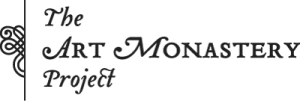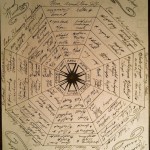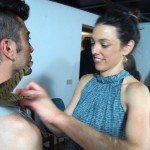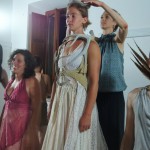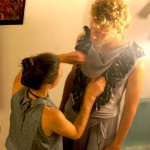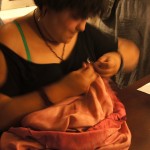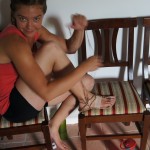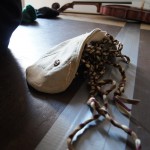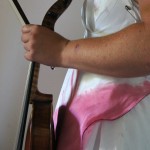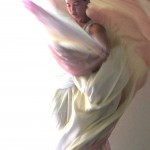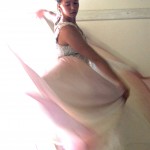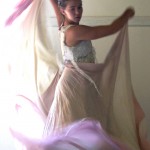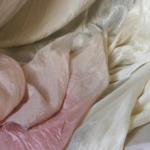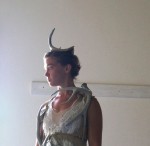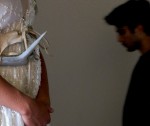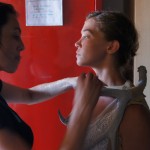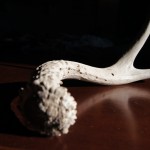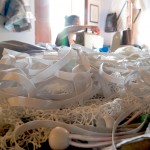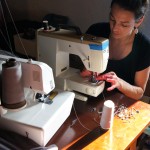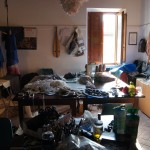The Myriad Layers and Textures of L’Eterno Smascherato

Artmonk-in-Residence and Costume Designer Anaya Cullen wrote the following post on the process of imagining, designing, and mapping the costumes for L’Eterno Smascherato.
~
Designing costumes for L’Eterno Smascherato was a deliciously rich experience and a welcome challenge. Working in a highly collaborative, experimental process to develop the piece, we had many lively discussions as a team, facilitated by our fearless director, Liz. In these discussions, we sought to develop foundational concepts and structure, to define characters and what we wanted the audience to experience and take away. Betsy, Liz, and I had mini intensive meetings to discuss lighting, scenic elements, costumes, and overall look and feel. I had a chance to ask questions like, What is the weight of the world in this scene? Is the emotional tone heavy here? Do you see emotionally heavy as dark or light in tone? Describe the movement you’d like to see here: Is it angular? circular? staccato? lyrical?
We talked in depth about character arc and development, and about the transitions and interactions that each of the five main characters would have. We looked at fabric and the colors and textures of the materials I brought with me from California based on initial discussions over Skype. We had a very organic and earthy palette in terms of color tones, fabric, and choices of materials, such as various kinds of silks, stretch nylon meshes, cotton jersey, quail feathers, shells gathered from the beach, recycled leather and suede—even elk antlers from my sister’s ranch in California. Fabric and dye colors ranged from iridescent pearl, sandstone, and Tuscan beige to burnt umber, pale indigo, cerulean blue, and burnt scarlet.
In developing looks for the characters, I made a diagram as a brainstorming tool to look at the attributes and arcs of each character, mapping materials, objects, shapes, emotional tones, and colors related to each character. Liz and I used this as a way to discuss and review characters, and to more clearly define and adjust the overall look and feel for each character. We brought fabric and objects into the rehearsal space to test out while movement phases developed, and we played in structured improvisations. Betsy brought the two large flashlights we used as mobile lighting for the piece to manipulate with fabric and objects and to play with shadow.
[media-credit name=”Anaya Cullen” align=”alignright” width=”720″]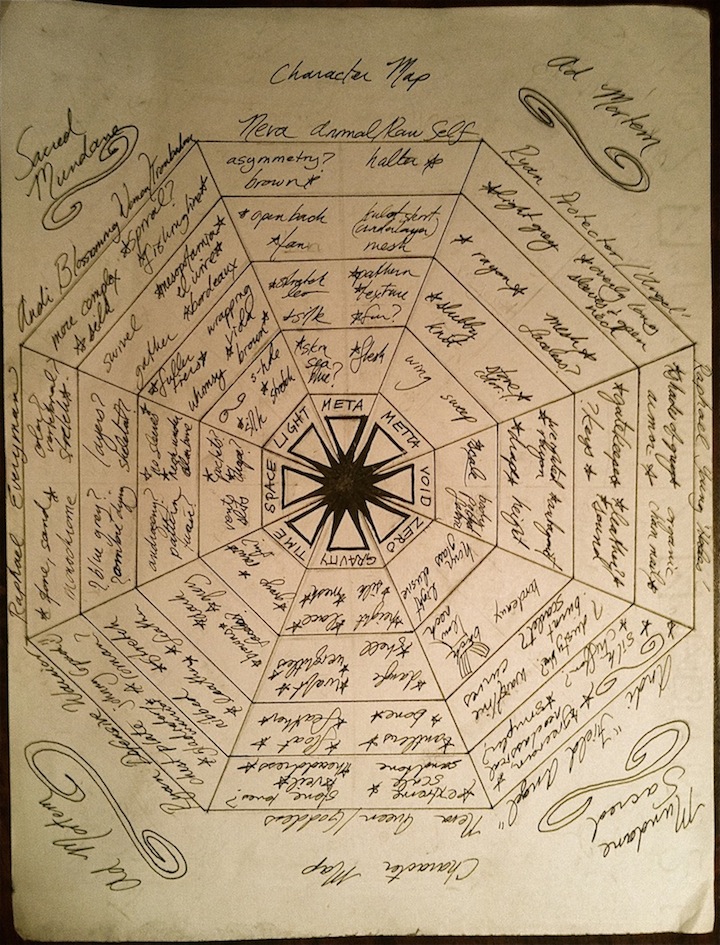 [/media-credit]
[/media-credit]
The show was conceptualized to be performed outdoors, so we were working with the constraint of not having a backstage or wings for entrances and exits. All pieces, once onstage, were “in” as part of the visual landscape of the show in one way or another. The opening look for the show was elaborate and immediately began to be deconstructed. Layers and pieces of costumes and headdresses were shed, taking on new form and function as prop and set. Costume pieces become props, props become projection, projection becomes environment. I love that, in a piece about our relationship to death and its many forms, the costumes experience mini deaths as layers are shed.
***
We were working under unusual circumstances: the costume design and production had to be done before the show was fully developed, which is certainly not the norm. Initially, I was quite worried about that. This meant that some costume design decisions had to happen before characters and the narrative were fully defined. How would that work? Liz offered her view of this as interesting design criteria for developing the show that would challenge us as a group. Always up for a new adventure, and bolstered by Liz’s perennially positive outlook, I dove in and I made a big note about the importance of designing costumes that would grow with the piece and with the performers as the show evolved after I left Italy.
It was a challenge to finish the design and build with the show still evolving and our time dwindling. The last two weeks in Italy were intense before I left for the US. It was moving to see people pull together in true team fashion to get the work done on finishing and altering costumes. In the end, I took pieces back with me to New York to finish in the wee hours of the morning. Meanwhile, back in Italy, Betsy, Emma, and Molly were fearlessly diving into finishing garments and sewing snaps and zippers. Betsy and I Skyped back and forth (thank goodness for Skype), and I made videos to explain garments.
It seemed à propos that, in the first year of the Art Monastery Project’s eight-year Art Monastic Cycle, where the theme is vigils and the exploration of wakefulness amid pitch-black darkness, that we had a couple of nights when the whole team sat “vigil” with the costumes, working late into the night. We had our final costume parade at midnight. It took place in a room at the monastery, directly over the church where hundreds of people were sitting vigil at the wake of the deceased beloved son of a man dear to us. The enormity and presence of the moment and the preciousness of the time we have together—the ever fleeting and sweet nature of life struck me. I was reminded of a quote by St. Francis of Assisi, one that I’d happened upon while researching the Franciscan monks who once inhabited the monastery:
“Start by doing what’s necessary; then do what’s possible; and suddenly you are doing the impossible.”
***
When designing for dance and movement, I always consider first the dancer, the performer. It’s important to me to make sure they are comfortable and can move freely. I listen first and then ask questions to discover what I can do to help each performer. Ideally, I’d like my designs and my presence on the creative team to allow each person on the team to do their work freely and bring their best to the table.
On a practical note, I imagine that the piece will grow and evolve as it is performed and customized to specific venues. My hope is that the costumes are designed and built with enough integrity of design, elasticity, and intrinsic understanding of the piece that the costumes grow with the show.
This team was a firestorm, working together and offering each other ways to step up and strong pillars to bounce things off of. What a treat. Perhaps that strong “firestorm” type of team is a pre-requisite to building a strong, highly experimental show in a new cultural context with unique constraints. Props to Liz and Artmonks for bringing a strong team together and creating a solid container within which to build the show.
Leave a Reply
You must be logged in to post a comment.
